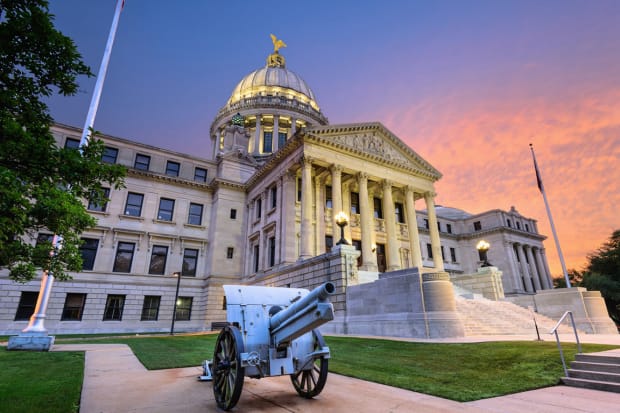America has more guns than people — 120.5 guns for every 100 residents. Guns are big business in the U.S.: One trade association estimates the firearm industry is worth about $71 billion in the U.S. and generates $7.86 billion in taxes.
On the flip side, one estimate of the cost of gun violence includes $557 billion annually in medical costs, loss of work, costs of law enforcement and quality of life costs, which represents the value of the irreparable damage when a victim’s life is cut short or a survivor is permanently disabled by gun violence.
We see that pain and loss too regularly in the news—in Uvalde, Texas, where 19 children and two teachers were killed at an elementary school in May, in Highland Park, Ill., where a gunman killed seven people and wounded dozens more at a Fourth of July parade, and in Buffalo, N.Y., where 10 people were shot and killed in a supermarket.
Americans are largely supportive of the new gun bill passed by Congress and signed into law by President Joe Biden on June 25, with nearly two-thirds approving, according to a survey by Pew Research. But 78% of the survey respondents think the new gun law will do either little or nothing at all.
Are they right? An analysis of current gun policy research by the Rand Corporation sought to learn which gun policies appear to actually have the desired effect. The analysis found strong evidence that laws that prevent children from accessing guns may have the desired effect of decreasing suicides and unintentional deaths and injuries, and moderate evidence that waiting periods may decrease suicides. But they also found supportive evidence that stand-your-ground laws may increase violent crime.
Is there enough research? For eight of the 18 policies they examined, either there were no studies examining the effects on any of the outcomes or the evidence was inconclusive.
The States That Are Most Dependent on the Gun Industry
To determine the states that are most reliant on the gun industry, personal finance site WalletHub compared the economic impact of guns on each of the 50 states to determine which among them leans most heavily on the gun business, both directly for jobs and political contributions and indirectly through ownership.
They gathered data from sources including the Census Bureau, the National Shooting Sports Foundation, FBI, ATF, the Giffords Law Center to Prevent Gun Violence, Google Trends and RAND on three key dimensions:
- Firearms industry, which includes jobs in the industry, number of firearms dealers, manufacturers and gun shows, state gun laws
- Gun prevalence, which includes the gun ownership rate, gun sales, gun ads,
- Gun politics, which gives equal weight to both gun control contributions and gun rights contributions to congressional members per capita.
Here are the states most dependent on the gun industry.

1. Idaho
- Firearms industry rank: 1
- Gun prevalence rank: 8
- Gun politics rank: 5
Idaho tops the list. The state has the most firearms-industry jobs per capita, tied with New Hampshire, Wyoming and Arkansas. Those four states also have the most firearms-industry output per capita and the most taxes paid by the industry. Idaho ranks fourth in the country for most gun ownership.

2. Wyoming
- Firearms industry rank: 4
- Gun prevalence rank: 9
- Gun politics rank: 1
Wyoming ties with three other states for gun politics (contributions to Congress per capita): Nebraska, North Dakota, and South Dakota. It ranks second, behind Montana, for gun ownership.

3. Kentucky
- Firearms industry rank: 20
- Gun prevalence rank: 1
- Gun politics rank: 6

4. South Dakota
- Firearms industry rank:6
- Gun prevalence rank: 12
- Gun politics rank: 1

5. Montana
- Firearms industry rank: 5
- Gun prevalence rank: 12
- Gun politics rank: 21
Shutterstock

6. Arkansas
- Firearms industry rank: 3
- Gun prevalence rank: 19
- Gun politics rank: 11
Shutterstock

7. Alaska
- Firearms industry rank: 14
- Gun prevalence rank: 24
- Gun politics rank: 8

8. North Dakota
- Firearms industry rank: 19
- Gun prevalence rank: 25
- Gun politics rank: 1

9. Missouri
- Firearms industry rank: 15
- Gun prevalence rank: 11
- Gun politics rank: 12
Shutterstock

10. Oklahoma
- Firearms industry rank: 30
- Gun prevalence rank: 7
- Gun politics rank: 9
iStock

11. Tennessee
- Firearms industry rank: 22
- Gun prevalence rank: 3
- Gun politics rank: 18
f11photo / Shutterstock

12. Alabama
- Firearms industry rank: 27
- Gun prevalence rank: 5
- Gun politics rank: 14

13. South Carolina
- Firearms industry rank: 18
- Gun prevalence rank: 15
- Gun politics rank: 10

14. Utah
- Firearms industry rank: 7
- Gun prevalence rank: 31
- Gun politics rank: 17

15. Nebraska
- Firearms industry rank: 16
- Gun prevalence rank: 41
- Gun politics rank: 1

16. West Virginia
- Firearms industry rank: 31
- Gun prevalence rank: 14
- Gun politics rank: 13

17. Indiana
- Firearms industry rank: 32
- Gun prevalence rank: 4
- Gun politics rank: 20

18. Louisiana
- Firearms industry rank: 33
- Gun prevalence rank: 33
- Gun politics rank: 7

19. Mississippi
- Firearms industry rank: 12
- Gun prevalence rank: 21
- Gun politics rank: 16

20. Kansas
- Firearms industry rank: 13
- Gun prevalence rank: 17
- Gun politics rank: 25

21. New Hampshire
- Firearms industry rank: 2
- Gun prevalence rank: 6
- Gun politics rank: 49
Shutterstock

22. Minnesota
- Firearms industry rank: 10
- Gun prevalence rank: 13
- Gun politics rank: 34
Dan Thornberg / Shutterstock

23. Maine
- Firearms industry rank: 8
- Gun prevalence rank: 26
- Gun politics rank: 33

24. Wisconsin
- Firearms industry rank: 38
- Gun prevalence rank: 16
- Gun politics rank: 23
Shutterstock

25. Oregon
- Firearms industry rank: 11
- Gun prevalence rank: 18
- Gun politics rank: 28

26. North Carolina
- Firearms industry rank: 21
- Gun prevalence rank: 32
- Gun politics rank: 22

27. Ohio
- Firearms industry rank: 26
- Gun prevalence rank: 22
- Gun politics rank: 24
Shutterstock

28. Iowa
- Firearms industry rank: 28
- Gun prevalence rank: 38
- Gun politics rank: 15

29. Texas
- Firearms industry rank: 17
- Gun prevalence rank: 40
- Gun politics rank: 19

30. Pennsylvania
- Firearms industry rank: 25
- Gun prevalence rank: 30
- Gun politics rank: 27

31. Vermont
- Firearms industry rank: 36
- Gun prevalence rank: 10
- Gun politics rank: 31

32. Arizona
- Firearms industry rank: 9
- Gun prevalence rank: 28
- Gun politics rank: 48
iStock

33. Washington
- Firearms industry rank: 39
- Gun prevalence rank: 36
- Gun politics rank: 29
Shutterstock

34. Michigan
- Firearms industry rank: 34
- Gun prevalence rank: 39
- Gun politics rank: 35

35. Florida
- Firearms industry rank: 41
- Gun prevalence rank: 42
- Gun politics rank: 26

36. Colorado
- Firearms industry rank: 24
- Gun prevalence rank: 27
- Gun politics rank: 44

37. Nevada
- Firearms industry rank: 23
- Gun prevalence rank: 34
- Gun politics rank: 45

38. New Mexico
- Firearms industry rank: 42
- Gun prevalence rank: 20
- Gun politics rank: 41
Raisa Nastukova / Shutterstock

39. Illinois
- Firearms industry rank: 46
- Gun prevalence rank: 23
- Gun politics rank: 37

40. Delaware
- Firearms industry rank: 43
- Gun prevalence rank: 29
- Gun politics rank: 40
Shutterstock

41. Virginia
- Firearms industry rank: 37
- Gun prevalence rank: 35
- Gun politics rank: 46

42. Georgia
- Firearms industry rank: 35
- Gun prevalence rank: 37
- Gun politics rank: 47
Shutterstock

43. Connecticut
- Firearms industry rank: 29
- Gun prevalence rank: 43
- Gun politics rank: 43

44. Massachusetts
- Firearms industry rank: 40
- Gun prevalence rank: 47
- Gun politics rank: 39
Shutterstock

45. Maryland
- Firearms industry rank: 44
- Gun prevalence rank: 45
- Gun politics rank: 32

46. California
- Firearms industry rank: 49
- Gun prevalence rank: 44
- Gun politics rank: 38

47. New York
- Firearms industry rank: 47
- Gun prevalence rank: 48
- Gun politics rank: 36
Shutterstock

48. Hawaii
- Firearms industry rank: 50
- Gun prevalence rank: 50
- Gun politics rank: 30
Shutterstock

49. New Jersey
- Firearms industry rank: 48
- Gun prevalence rank: 49
- Gun politics rank: 42

50. Rhode Island
- Firearms industry rank: 45
- Gun prevalence rank: 46
- Gun politics rank: 49
The states with the lowest rate of gun ownership are New York, Rhode Island, Hawaii, Massachusetts and New Jersey.
See the methodology for this ranking at WalletHub.com.







